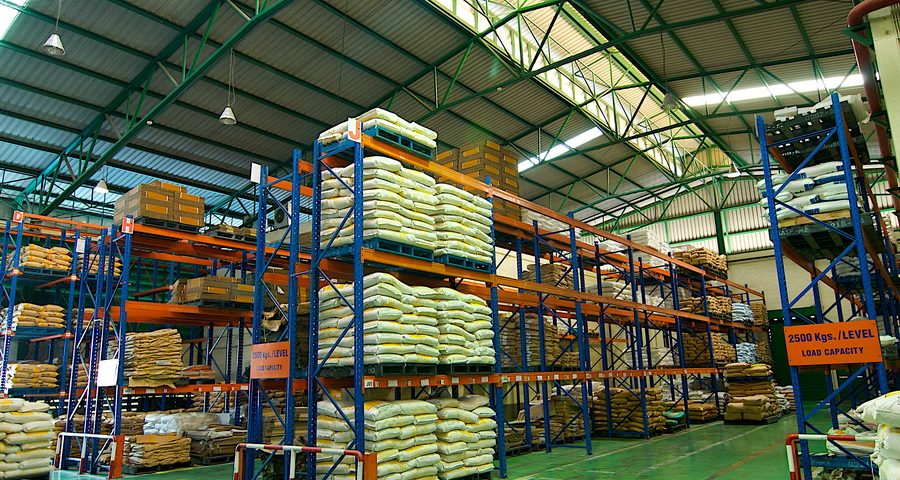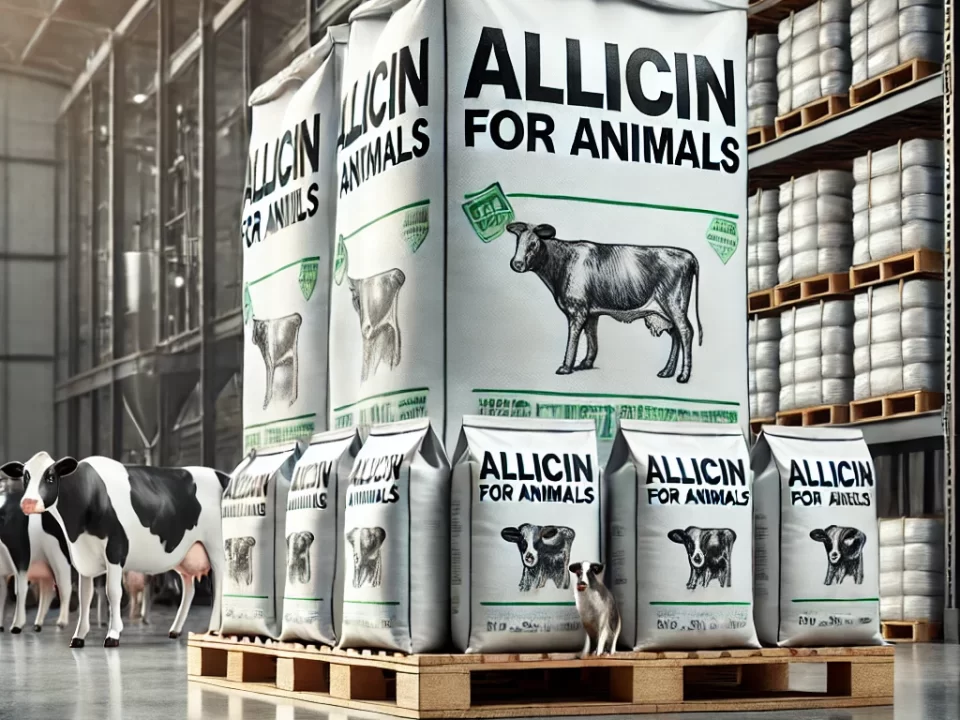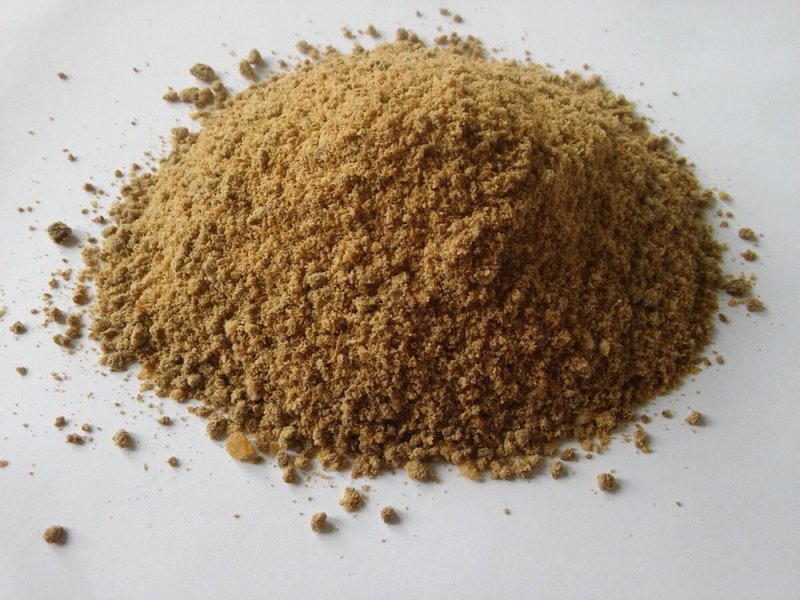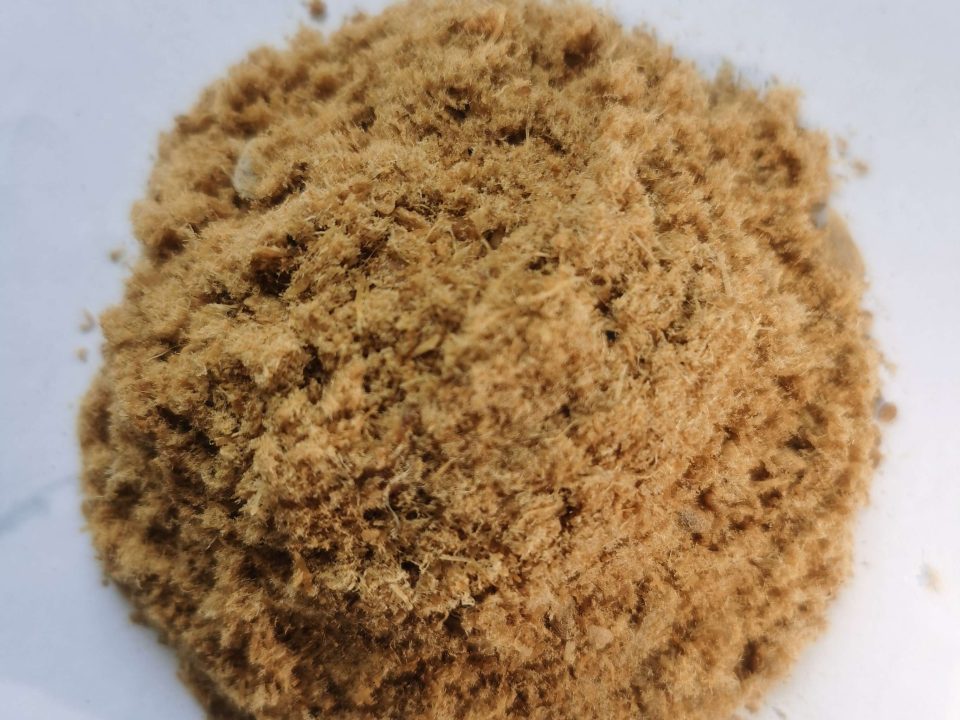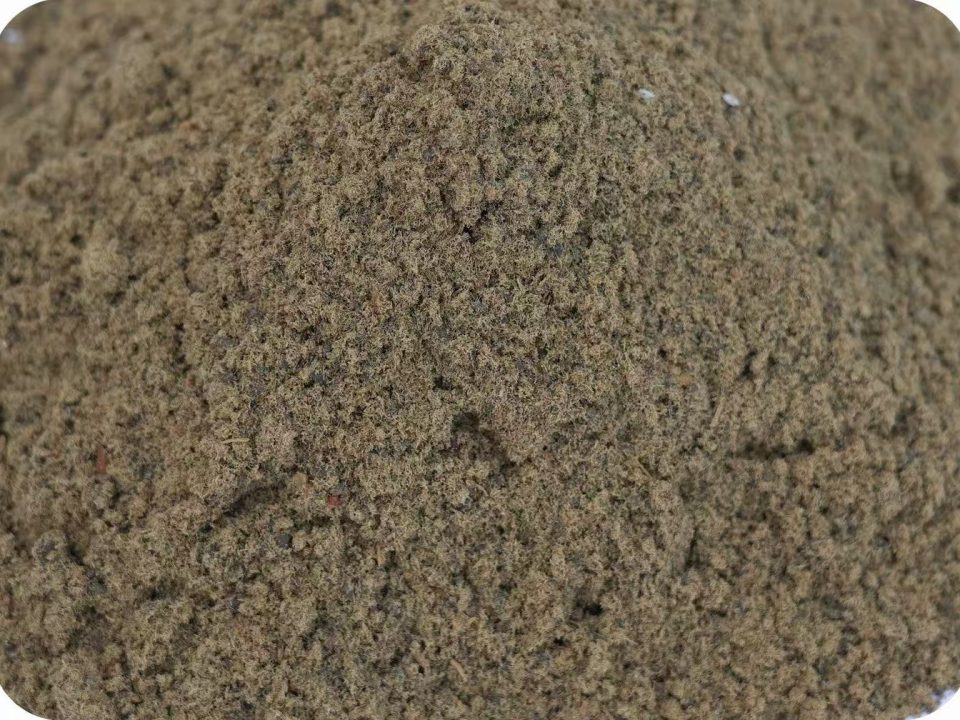De methode voor de voorbereiding van de choline chloride poeders van deze uitvinding

Hoe te produceren Cholinechloride voor pluimvee feed?
november 19, 2017
DCP dicalciumfosfaat pluimvee Feed Grade
november 23, 2017Deze uitvinding heeft betrekking op een poedervorm van Cholinechloride die een hogere heeft Cholinechloride inhoud dan tot nu toe bekend met behoud van gewenste vloei- en opslageigenschappen, en een werkwijze voor dit product.
Choline chloride is chemisch (2-hydroxyethyl)trimethylammoniumchloride. Het is een bron van choline, een van de vitamine B-complexen. Het vindt commercieel gebruik als voedingsfactor, voornamelijk als voedingssupplement voor pluimvee en varkens, en voor farmaceutische toepassingen. De verbinding in het zuivere, watervrije toestand is wit, kristallijne vaste stof die zeer oplosbaar is in water of alcohol. Het is behoorlijk hygroscopisch en neemt zeer snel voldoende vocht op om een stroperige vloeistof te worden. Bijgevolg, cholinechloride wordt meestal verkocht als een wateroplossing-a 70% concentratie is een veel voorkomende commerciële vorm.
Cholinechloride – DIEETEISEN VAN KLEINKLEES
Choline-suppletie bij vleeskuikens vertoont een lineaire respons in gewichtstoename tot 1115 mg/kg 10-22 dagen oud. Het verhogen van het cholinegehalte tot 2000 mg/kg verhoogt de gewichtstoename verder, maar boven deze waarde werd geen significante toename in gewichtstoename waargenomen. Er kon dus worden geconcludeerd dat een teveel aan cholinesupplementatie geen bijkomend voordeel had.
Cholinechloride – DIEETEISEN VAN LAGERS
Lagen, zoals vleeskuikens, hebben een essentiële behoefte aan choline. Choline is nodig voor de vorming van een fosfolipide-lecithine, een bestanddeel van eigeel. De huidige NRC-aanbevelingen voor de hoeveelheid choline bij leghennen zijn dat wel 105 mg/dag voor witte ei -lagen en 115 mg/dag voor degenen die bruine eieren leggen. Gemiddeld voor de twee groepen kan worden geconcludeerd dat de vereiste concentratie van choline in de voeding bij een voeropnameniveau van 100 en 110 g/dag respectievelijk, bedraagt ongeveer 1100 mg/kg.
Er zijn verschillende factoren die de behoefte van een kip aan choline beïnvloeden, zoals leeftijd, voeropname en ruw eiwit- of methioninegehalte in de voeding. Het is algemeen aanvaard dat de voedingsbehoefte afneemt met de leeftijd, mogelijk geassocieerd met een toenemende voeropname. Methionine is het eerste beperkende aminozuur voor de eierproductie, gezien de gemeenschappelijke functie met choline bij donatie van methylgroepen, interacties tussen de twee voedingsstoffen kunnen worden verwacht. De behoefte aan choline in leghennen varieert ook afhankelijk van het methionine- en cysteïnegehalte in het voer. Een dieet rijk aan M+C heeft een lage behoefte aan choline en omgekeerd.
De volgende voorbeelden illustreren de bereidingswijze voor de cholinechloridepoeders van deze uitvinding.
Voorbeeld 1 Preparaten met Diluex-klei (een) Spray drogen van een waterige slurry van choline chloride en diluex.
Een slurry werd bereid door te mengen 970 pond van een 63% waterige choline chloride -oplossing en 300 pond diluex klei. Deze slurry werd verhit 140 F. en had een viscositeit van 480 centipoises. De slurry werd gepompt naar een spuitdroger van een diameter van 10 voet en bij een druk van een druk van 1500 pond per vierkante inch door middel van een mondstuk in de droger. Het slurry, Na pompen, bleek in dezelfde tijd te zijn. Op deze manier, Een aanzienlijk uniform oppervlak -impregnatie van de gedroogde choline -chloride -deeltjes trad op. Het vaste product werd gescheiden door middel van een cyclooncollector en ontladen in een container. De volgende tabel geeft details over deze voorbereidingen, die allemaal een stal gaven, Droog, vrij stromen Choline Chloride poeder Geschikt voor commercieel gebruik.
TABEL - POEDER-ED CHOLINE CHLORIDE PREPARAATSTELLINGEN Geïntroduceerd in sproeidroger Product Lengte van vaste stoffen Voorbeeld Run van choline-additief (min) Hersteld, Cholinechloride Percentage chloride, water, (droge basis) Procent Percent lbs. Vriendelijke pond.
12 Diluex-klei 8.3 62 86 58 2.6 13. 7 (1de 4. 2 62 100 68 2. 2 18 Doen 5. 2 68 90 78 1.9 19 Attaclay X250. 4. 5 73 94 80 1. 1 11 Bardense klei 1. 4 45 100 85 1. 6 20 Walnootschelpmeel 3. 5 75 94 78 1.2 14 Dilllex klei+Cab-O-Sil bij 9:1 4 59 97 74 2′ 1 WT. verhouding. 22 Diluex klei+Oab-O-Sil bij 5. 6 100 99 75 2. 3
97.5125 WT. verhouding. 19 Diluex klei-natriumbikoolstof- 4 95 96 76 2.3
gegeten bij 9:1 WT. verhouding.
blokkeerde periodiek de stroom van het product naar de opvangtrommels en maakte hameren op de wanden noodzakelijk om de stroom weer op gang te brengen. Het gedroogde cholinechloridepoeder klonterde in de opvangtrommels. De weergegeven hoeveelheid vaste stof die uit de collector is teruggewonnen 64% van de 912 lbs. theoretisch. Door de droger schoon te maken, een andere 15% van het vaste product werd teruggewonnen, waardoor de totale verantwoordelijkheid voor vaste stoffen toeneemt 79%. Uit analyse bleek dat het product 65% Cholinechloride.
Door deze methode, er waren problemen met het toenemen van de viscositeit van de oorspronkelijke slurry, waarbij vaste stoffen zich hechten aan de wanden van het droog- en opvangsysteem, met aankoeken van het product, en met slechte opbrengsten.
(B) Sproeidrogen door afzonderlijke toevoeging van waterige cholinechloride-oplossing en Diluex.
Een ander preparaat werd gemaakt in dezelfde sproeidroger en onder dezelfde droogomstandigheden, behalve dat de cholinechloride-oplossing alleen werd verneveld terwijl de Diluex-klei rechtstreeks in de bovenkant van de droger werd gevoerd.. De klei werd in een zodanig tempo aangevoerd dat ongeveer 1 pond. ervan werd voor iedereen in de droger gedaan 3.2 lbs. van de cholinechloride-oplossing die werd verneveld. De vaste stoffen op de wanden van de droger bereikten snel een evenwichtsdiepte en stroomden gemakkelijk door het opvangsysteem. Er werd geen problemen ervaren bij het ontladen van de vaste stoffen van de cycloon -collector. Het product stroomde vrij in de containertrommels en cake niet. De vaste stof die in de drums was verzameld, bedroeg 82% van de vaste stoffen die in de droger worden gevoed en een gedeeltelijke reiniging van de droger verhoogde deze hoeveelheid tot 87%. Het resulterende droog, vrij stromende vaste stof die door analyse is opgenomen 72% Cholinechloride.
Andere voorbeelden Een reeks runs werd gemaakt op een manier van die beschreven in voorbeeld 1(B), Maar met behulp van een spuitdroger van 4 voet diameter. Lucht werd doorgegeven met het tempo van 250 kubieke voet per minuut en kwam de kamer binnen bij een temperatuur van ongeveer 170 naar 210 C. en liet het achter bij een temperatuur van ongeveer 110 C. een 63% waterige oplossing van cholinechloride werd geassemiseerd in de kamer van de spuitdroger door een mondstuk bij een druk van 100 pond per vierkante inch. Het poedervormige additief werd door middel van een schroeftransporteur in de bovenkant van de droogkamer nabij de luchtinlaat gebracht. De invoersnelheid van de twee voedingsstromen in de droogkamer werd zo aangepast dat beide materialen in ongeveer 1,5 uur werden toegevoegd- Op dezelfde manier, andere waterige cholinechloride-oplossingen tot aan de concentratie kunnen worden gebruikt en de hoeveelheid van het poedervormige additief kan worden gevarieerd zodat het eindproduct cholinechloride bevat tot maximaal de concentratie. De cholinechloridepoeders van deze uitvinding kunnen alleen worden gebruikt of gemengd met andere materialen die gewoonlijk in diervoeders worden gebruikt.. Insgelijks, het poeder kan in andere vormen worden gevormd, zoals pellets, indien gewenst.
Door middel van deze uitvinding, there are provided new choline chloride powders of high choline chloride content which are essentially dry, free-flowing and stable, and which are made by a novel and economic process. Such a product fulfills a long standing commercial need.
We claim:
1. A stable, substantially dry, free-flowing powder comprising choline chloride substantially encapsulated by a powdered additive selected from the group consisting of attapulgite clay, a mixture of attapulgite clay and a second additive selected from the group consisting of silica gel and sodium bicarbonate wherein said second additive is no more than 10% of the Weight of the mixture, kaolinite clay, a mixture of kaolinite clay and a second additive selected from the group consisting of silica gel and sodium bicarbonate wherein said second additive is no more than 10% of the weight of the mixture, Walnootschelpmeel, and a mixture of walnut shell flour and a second additive selected from the group consisting of silica gel and sodium bicarbonate wherein said second additive is no more than 10% of the Weight of the mixture, said powder containing 68% naar 85% choline chloride on an anhydrous weight basis.
2. A stable, substantially dry, free-flowing powder comprising choline chloride substantially encapsulated by an attapulgite clay, said powder containing from about 68% to about 85% of choline chloride on an anhydrous weight basis.
3. A stable, substantially dry, free-flowing powder comprising choline chloride substantially encapsulated by an attapulgite clay having an average particle size of 1.6 naar 1.9 micron, said powder containing from about 68% to about 85% of choline chloride on an anhydrous weight basis.
4. A stable, substantially dry, free-flowing powder comprising choline chloride substantially encapsulated by a mixture of an attapulgite clay and sodium bicarbonate wherein the sodium bicarbonate is no more than 10% of the mixture, said powder containing from about 68% to about 85% of choline chloride on an anhydrous weight basis.
5. A stable, substantially dry, free-flowing powder comprising choline chloride substantially encapsulated by a kaolinite clay, said powder containing from about 68% to about 85% of choline chloride on an anhydrous weight bas s.
6. A stable, substantially dry, free-flowing powder comprising choline chloride substantially encapsulated by walnut shell flour, said powder containing from about 68% to about 85% of choline chloride on an anhydrous weight basis.
7. In a spray-drying process for the production of a v stable, substantially dry, free-fiowing powder containing from 68% to about 85% by weight of choline chloride substantially encapsulated by a powdered additive selected from the group consisting of attapulgite clay, a mixture of attapulgite clay and a second additive selected from the group consisting of silica geland sodium bicarbonate wherein said second additive is no more than 10% of the weight of the mixture, kaolinite clay, a mixture of kaolinite clay and a second additive selected from the group consisting of silica gel and sodium bicarbonate wherein said second additive is no more than 10% of the Weight of the mixture, Walnootschelpmeel, and a mixture of walnut shell flour and a second additive selected from the group consisting of silica gel and sodium bicarbonate whereinsaid second additive is no more than 10% of the weight of the mixture, the steps comprising (een) atomizing an aqueous choline chloride solution into the drying chamber of a spray dryer,
(B) simultaneously feeding into the drying chamber as a separate feed said powdered additive, en.
(C) collecting the choline chloride powder which has become impregnated with the powdered additive.
8. In a spray-drying process for the production of a stable, substantially dry, free-flowing powder containing from 68% to about 85% by weight of choline chloride, according to claim 7, De stap waarin deze poedervormige additief tegelijkertijd in de droogkamer wordt gevoerd met de binnenkomende luchtstroom als een aparte feed.
Referenties geciteerd patenten in de Verenigde Staten 2,765,231 10/1956 Plitt 992 2,879,161 3/1959 Vallentine 99-2 Buitenlandse patenten 1,307,421 9/1962 Frankrijk.
Andere referenties Chemische samenvattingen, 59:447 (1963). Watkins, T. C., et al., Handboek van insecticide stof 25 Verdunningen en dragers, Dorland (1955) P. 4.
Sam Rosen, Primaire onderzoeker.
s. ZANGER, Assistent -onderzoeker.
Bij de toekenning en ondertekening van het contract, Fred Franklin, Senior Vice President van Davy Process Technology, gezegd: “We zijn verheugd om met Thais choline -chloride te werken om deze plant te ontwerpen en licentiëren, die Davy Process Technology verder zal vestigen als een toonaangevende leverancier van technologie voor de productie van methylamines en zijn derivaten.”
Gebruik van choline chloride
Choline -chloride is een complexe vitamine/voeding, dat wordt toegevoegd aan zowel kippen- als varkensvoer om een snelle en gezonde groei te bevorderen. De chemische stof wordt geproduceerd door een proces waarbij gebruik wordt gemaakt van een reactie tussen ethyleenoxide, methanol, ammoniak en zoutzuur. TCC is de eerste fabrikant van cholinechloride in het land.
De voedingsstof wordt geleverd als poeder in zakken van 25 kg en wordt toegediend als een 70% oplossing in water, die wordt gebruikt om de graanpuree te maken’ DIERVOEDING. Vanuit diervoedingsoogpunt is choline nodig voor de biosynthese van fosfatidylcholine, dat een basiscomponent is van het celmembraan en tevens een voorloper van de essentiële neurotransmitter acetylcholine.
productie
Cholinechloride wordt vervaardigd in een afgesloten reactievat door de reactie van zoutzuur met watervrij trimethylamine en ethyleenoxide onder slechts matige druk. Het door Davy Process Technology gelicentieerde proces werkt even goed als een batch- of continu proces, het produceren van commerciële hoeveelheden zoals vereist.


